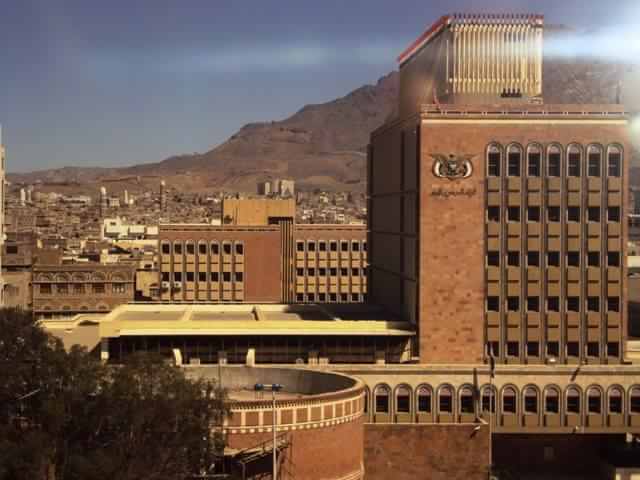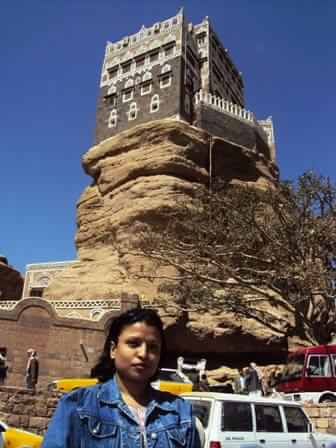Journey towards “Happy Arabia”
Categories:
It was about 10:30 pm. I reached Sana’a, the capital city of Yemen. The whole country is surrounded by hills. In Arabic, Yemen means South Arabia. It was the center of civilization and wealth on the Arabian Peninsula for centuries. That’s why the Romans referred to the area as "Happy Arabia". After entering the hotel I was surprised since there were very few boarders & the floor, ceiling, window, even the washroom etc were in very bad condition. After calling the room service, one voice further surprised a lot. A room service boy answered in Bangla! Later after talking to him, came to know that he had no money to return Bangladesh, even he couldn’t make phone call to his parents. What a struggling life! Really felt sorry for that boy. Though I was very much tired, but it was a terrible night for me, I didn’t know why I felt like that. Sever panic seized me! Passed that night thinking if somebody knocked my door what did I do? At last the night was over, changed the hotel in the morning! Ohhhh…. What a relief!

Next day, I had day long official meeting. But one thing really embarrassed me…. Perhaps I am the only woman in the city who was without any hijab or cover. For this reason everybody was looking at me with a strange look, may be they considered it as daydream! I enjoyed their facial expression! The main surprise was waiting in the evening. When passing the road I found people chewing something & putting something in huge amount inside their mouth which seems a ping-pong ball inside the mouth. Then one Yemeni friend told that the thing which they were chewing called “Khat”. It is an amphetamine-like stimulant, which is said to cause excitement, loss of appetite and euphoria. Khat is a controlled substance in some countries, such as the United States, Canada and Germany, while its production, sale and consumption are legal in other nations, including Djibouti, Ethiopia, Somalia and Yemen. When the sun sets, Yemeni men start enjoying this khat, even women also, not in front of men! Khat chewing has a long history as a social custom dating back thousands of years. The Ancient Egyptians considered the khat plant a divine food, which was capable of releasing humanity's divinity. The Egyptians used the plant for more than its stimulating effects; they used it for transcending into "apotheosis", with the intent of making the user god-like. Khat is so popular in Yemen that its cultivation consumes much of the country's agricultural resources. It is estimated that 40% of the country's water supply goes towards irrigating it, with production increasing by about 10% to 15% every year. That Yemeni friend also proposed me to taste it! But I refused!!! That time this poor girl forgot the proverb “When in Rome do as Romans do”!!!
Later I visited old Sana’a. It is situated in a mountain valley at an altitude of 2,200 meter. In the 7th and 8th centuries the city became a major centre for the propagation of Islam. It is also recognized as the capital of the Abyssinian and Persian rulers. Important features of the city of Sana’a include more than 50 mosques, one of which is the Great Mosque that was ordered to be built by the Prophet Mohammad during the eighth year of Hijjra. I had the opportunity to see outside portion of this mosque, it has a real ancient look.
There is a say – if you visit Yemen without visiting ‘Dar Al-Hajar’ means you visit nothing! So why should I missed it? Yeah ‘Dar Al-Hajar’ (Rock Palace) is a very fascinating place. It is located in northwest of Sana'a in the middle of Wadi Dhahr, 25 km away from the city center. It is the most popular symbol of Yemen seen on posters and in magazines. Dar Al-Hajar is the iconic symbol of Yemen. It was built in the 18th century by well-known scholar Ali bin Saleh Al-Amari, who was a cleric, scientist, poet, rhetorician, and intellectual with a vast knowledge and versatility. I forgot how many staircase I climbed to reach the peak of this palace but each & every step was very much interesting. During passing the living room, hamam khana of the King, I felt somebody was following me. Yeah it was little bit hallucination. I salute the architect who built it!

(in front of ‘Dar Al-Hajar’ )
I must have something to say about homogeneous architectural strategy. The city in its landscape has an extraordinary artistic and pictorial quality. The buildings demonstrate exceptional craftsmanship in the use of local materials and techniques. The houses and public buildings of Sana'a, which have become vulnerable as a result of contemporary social changes, are an outstanding example of a traditional, Islamic human settlement. If you are new in the city, it would really be difficult to differentiate one building from another. All seems same.



Comments
Post new comment